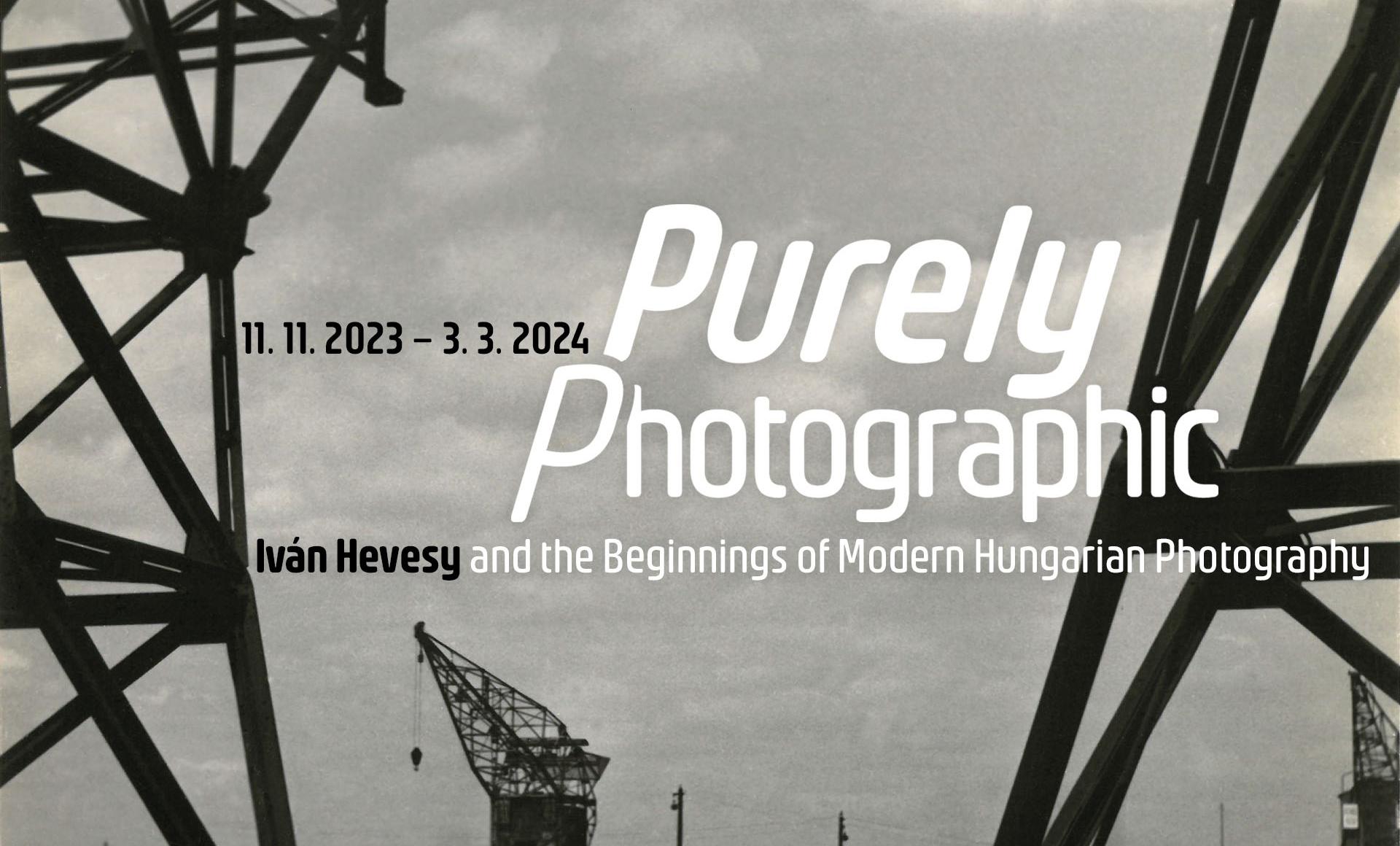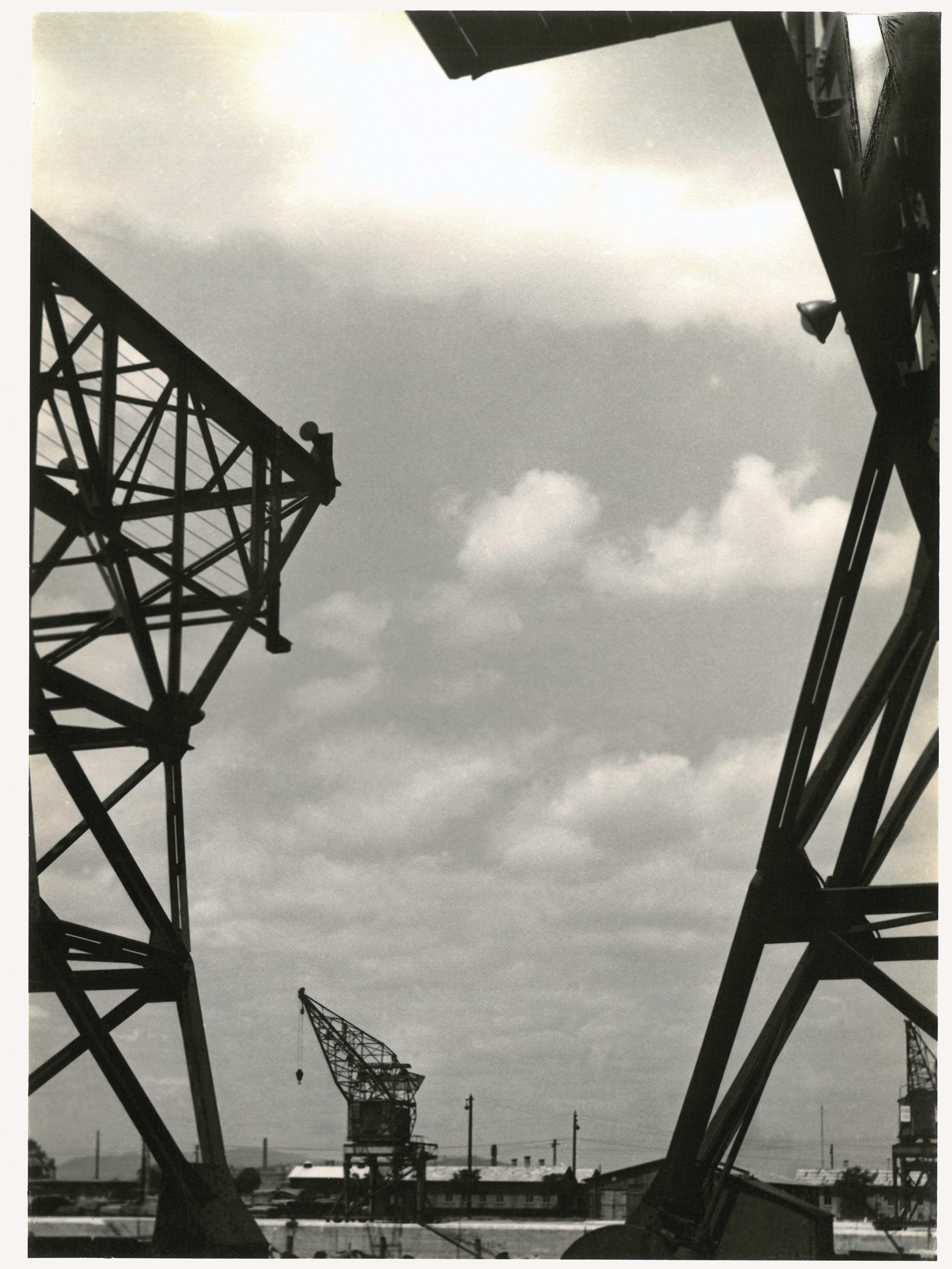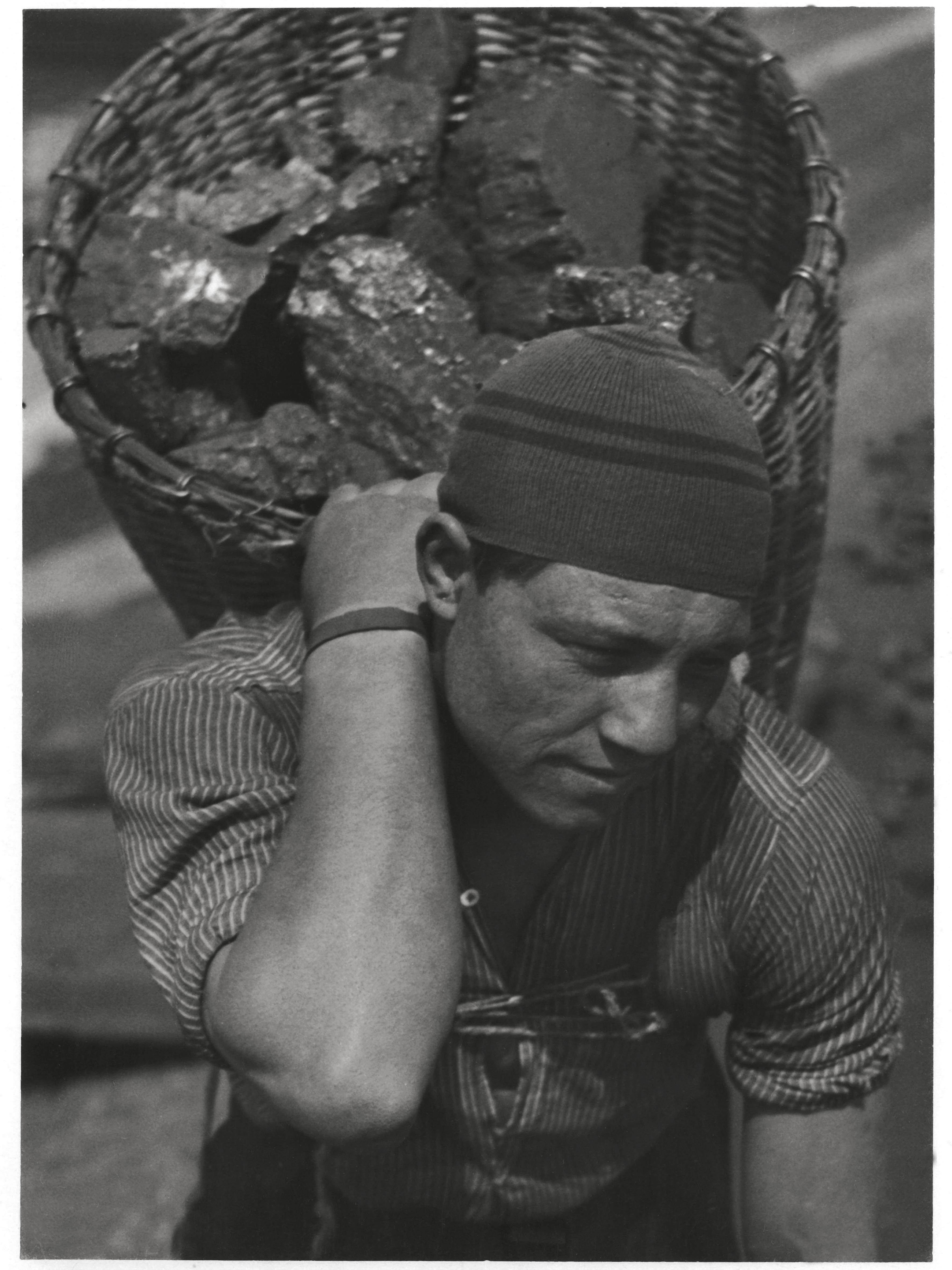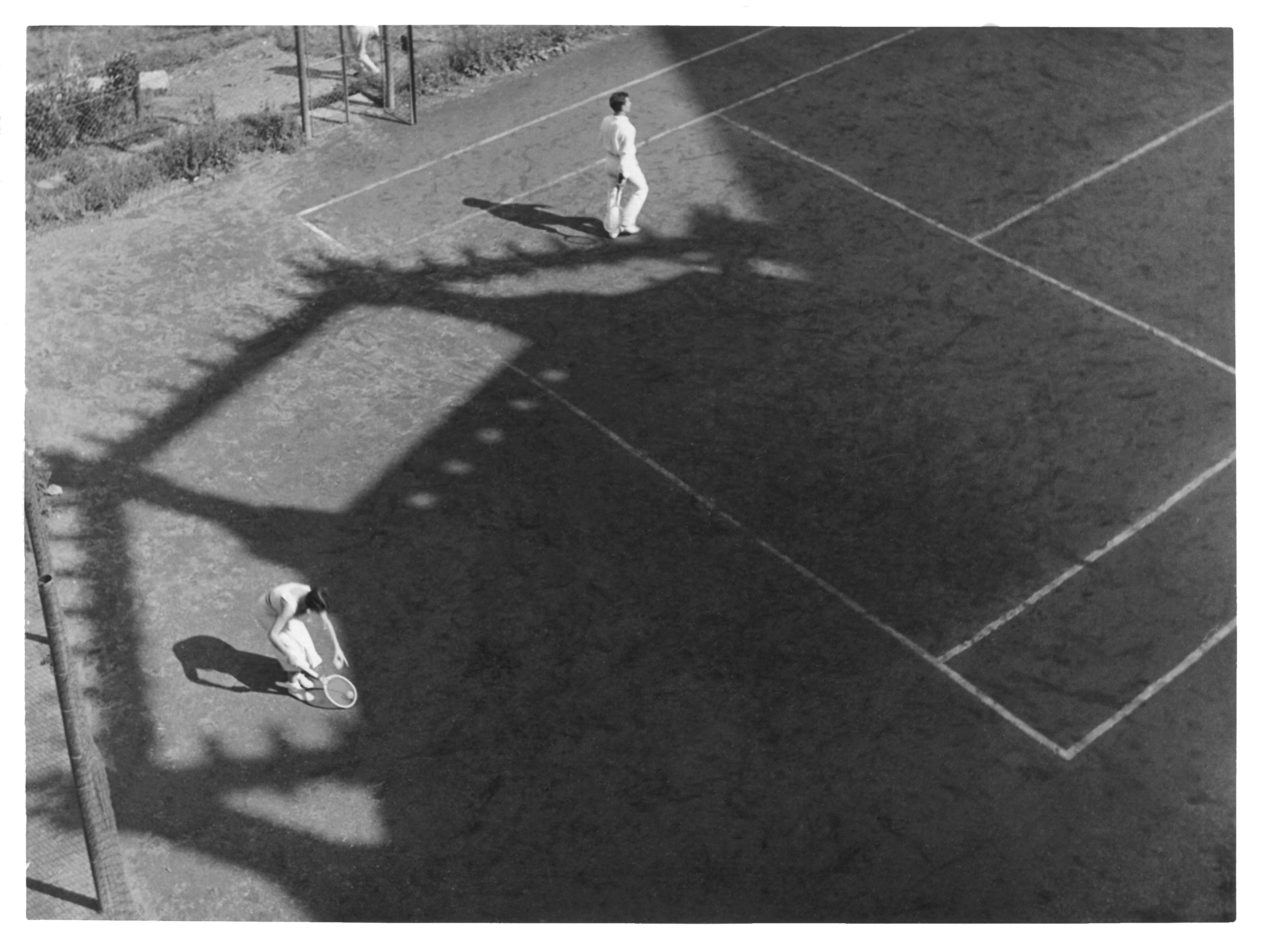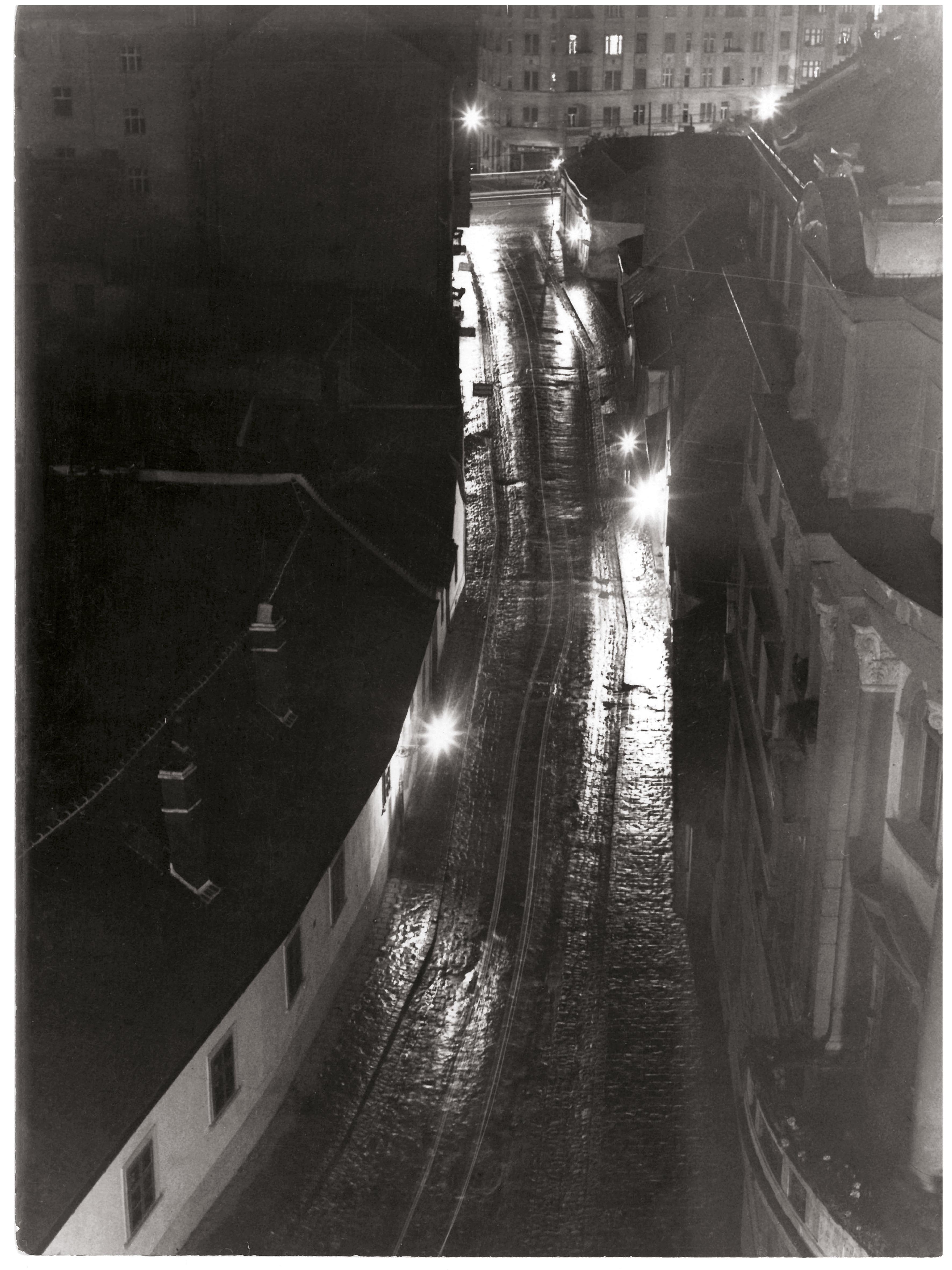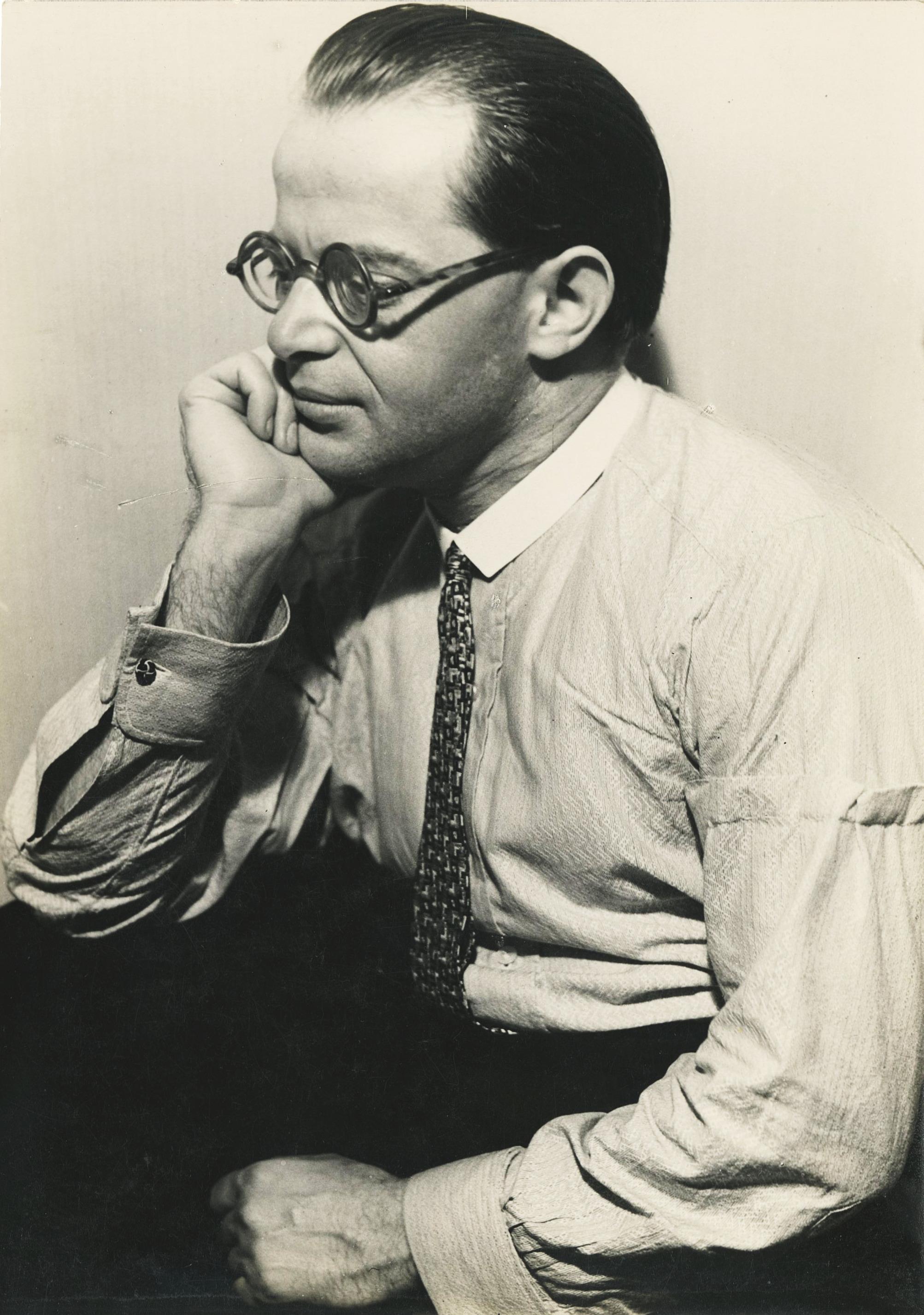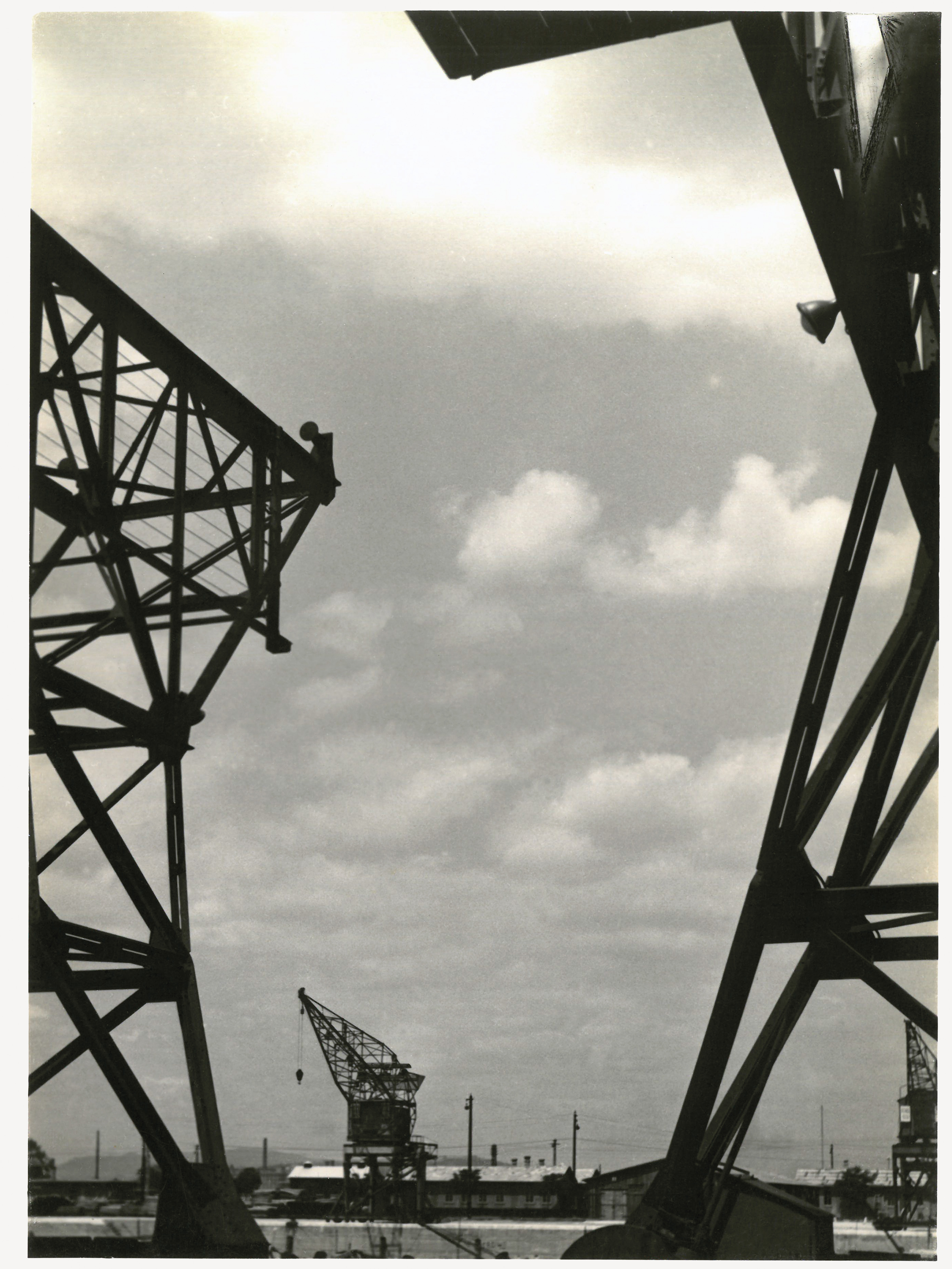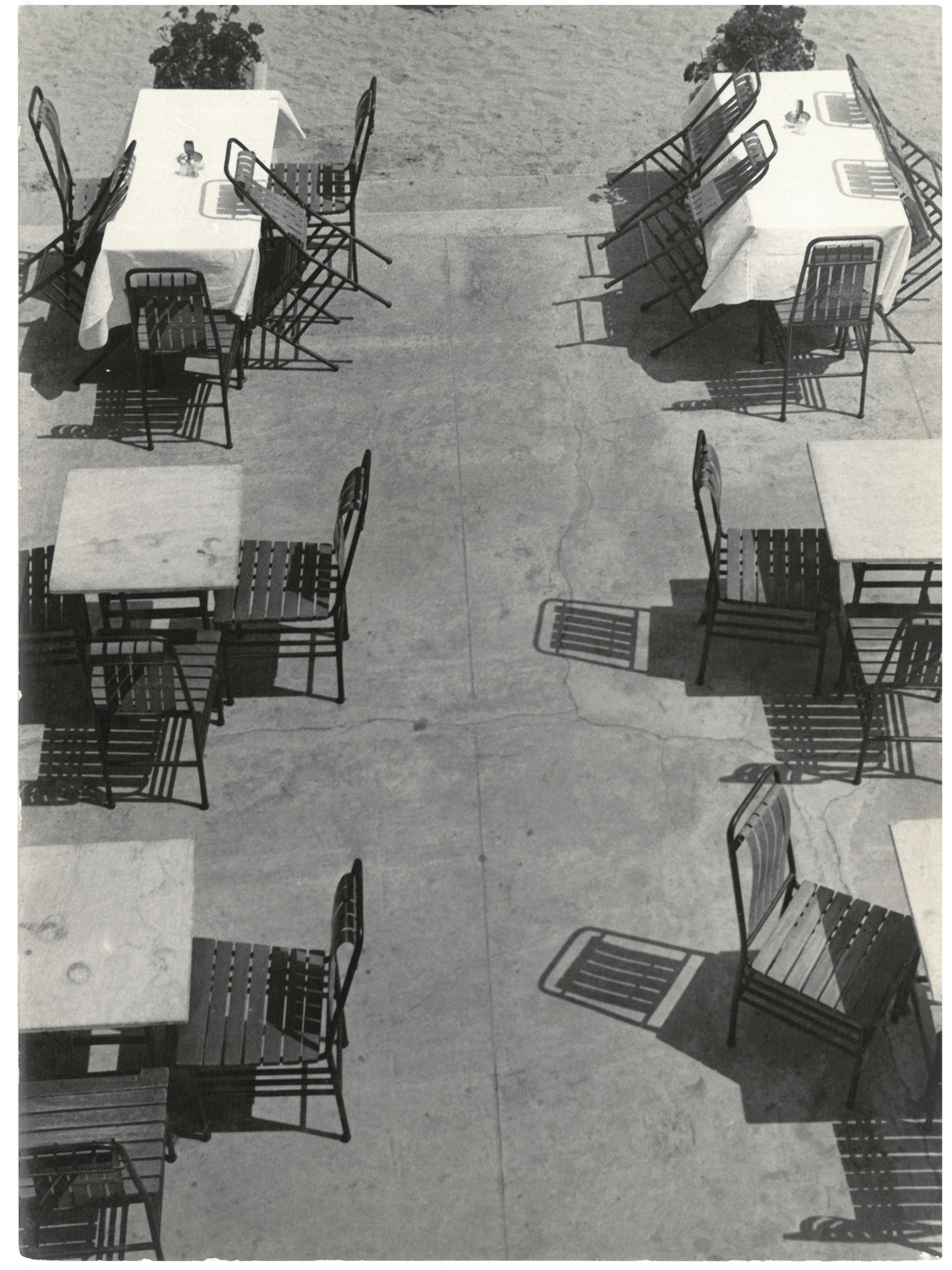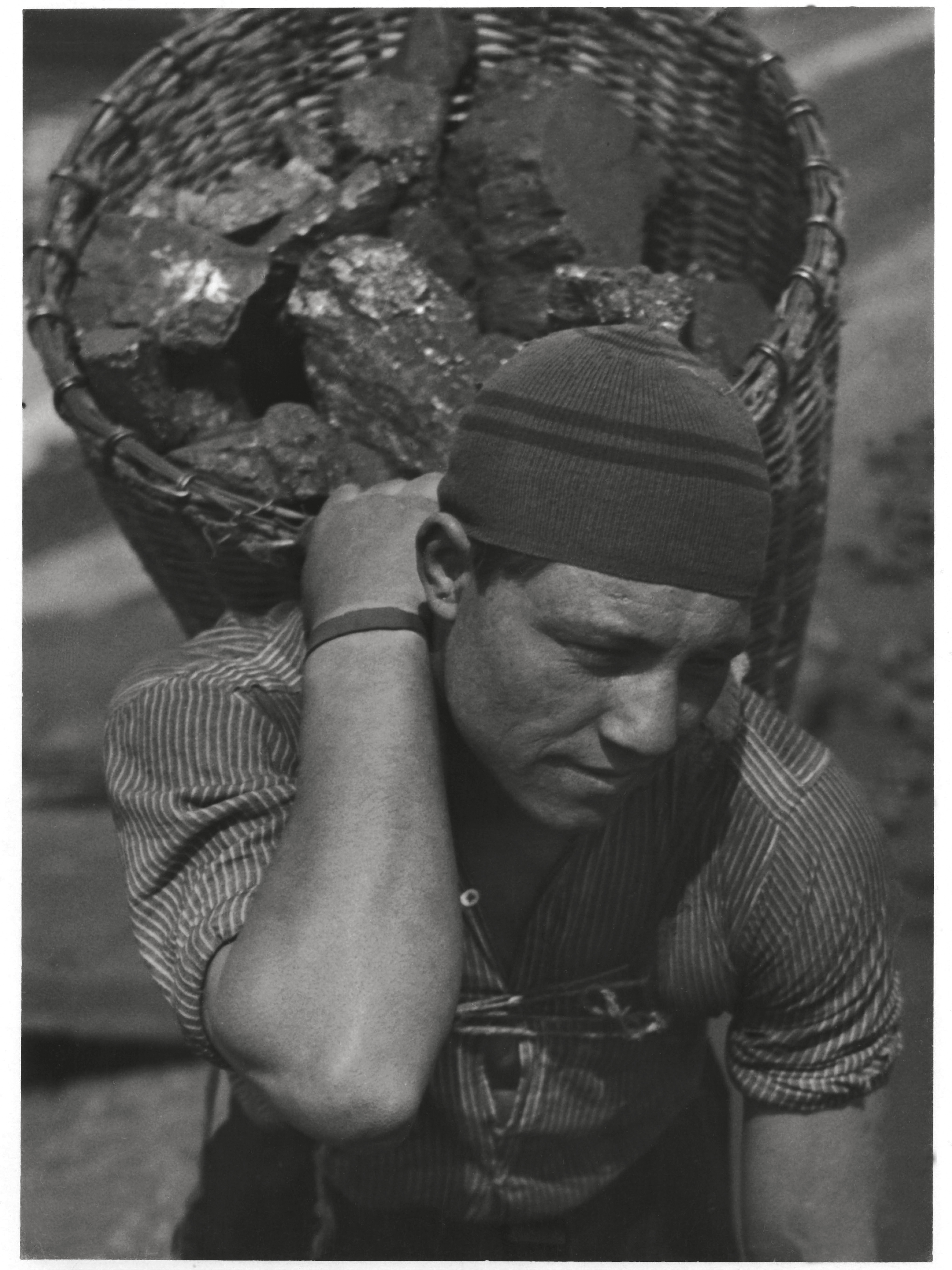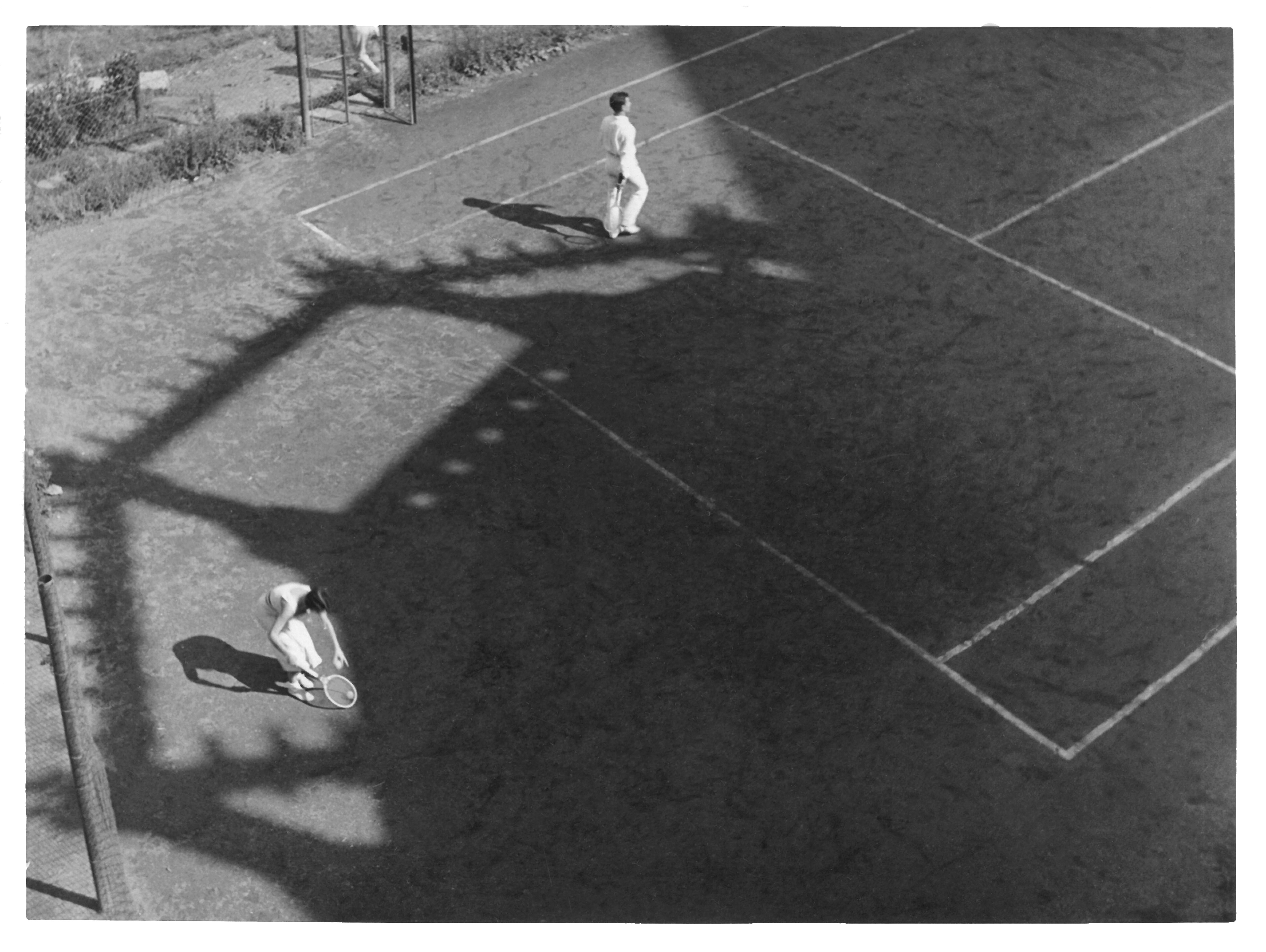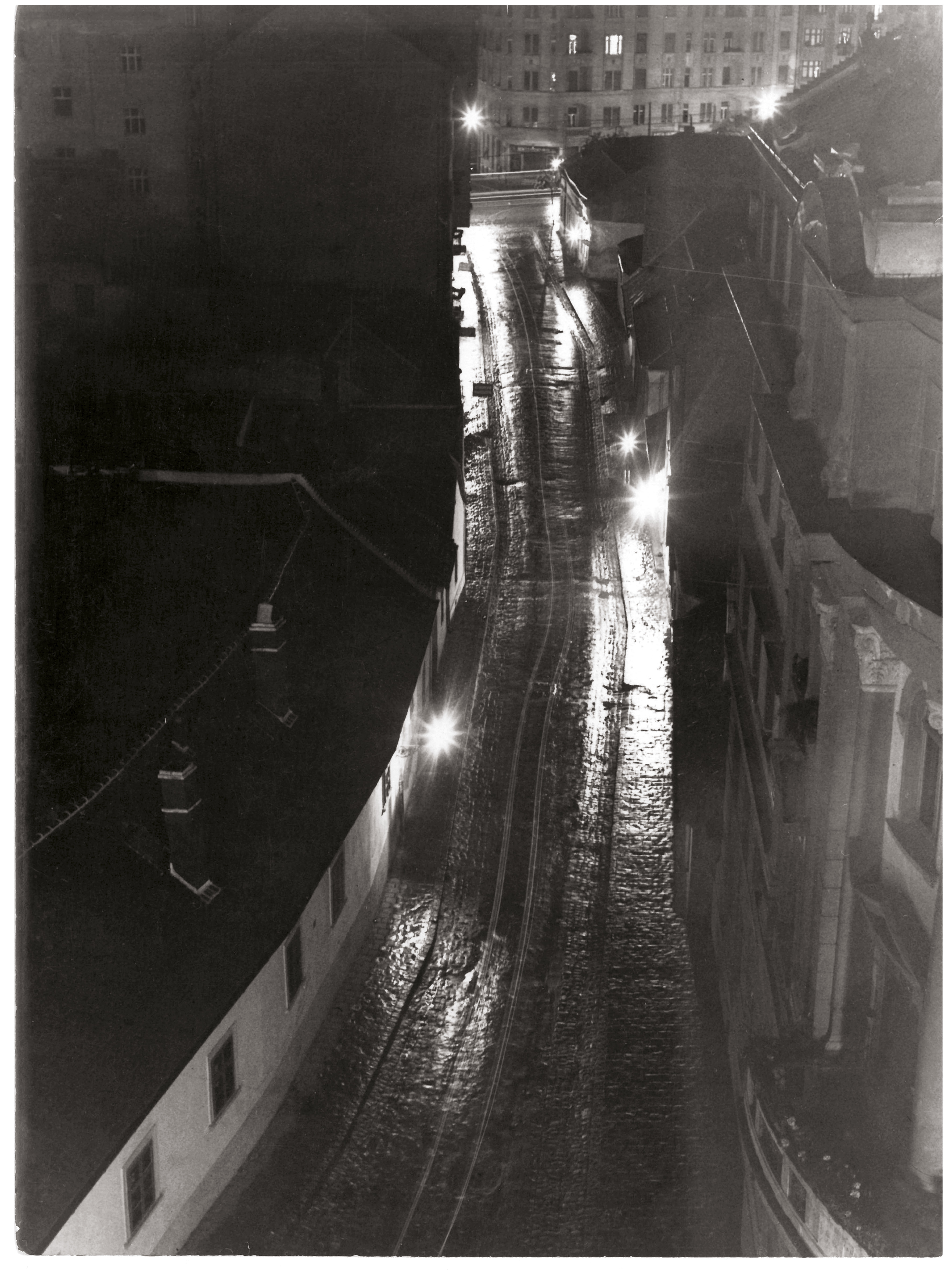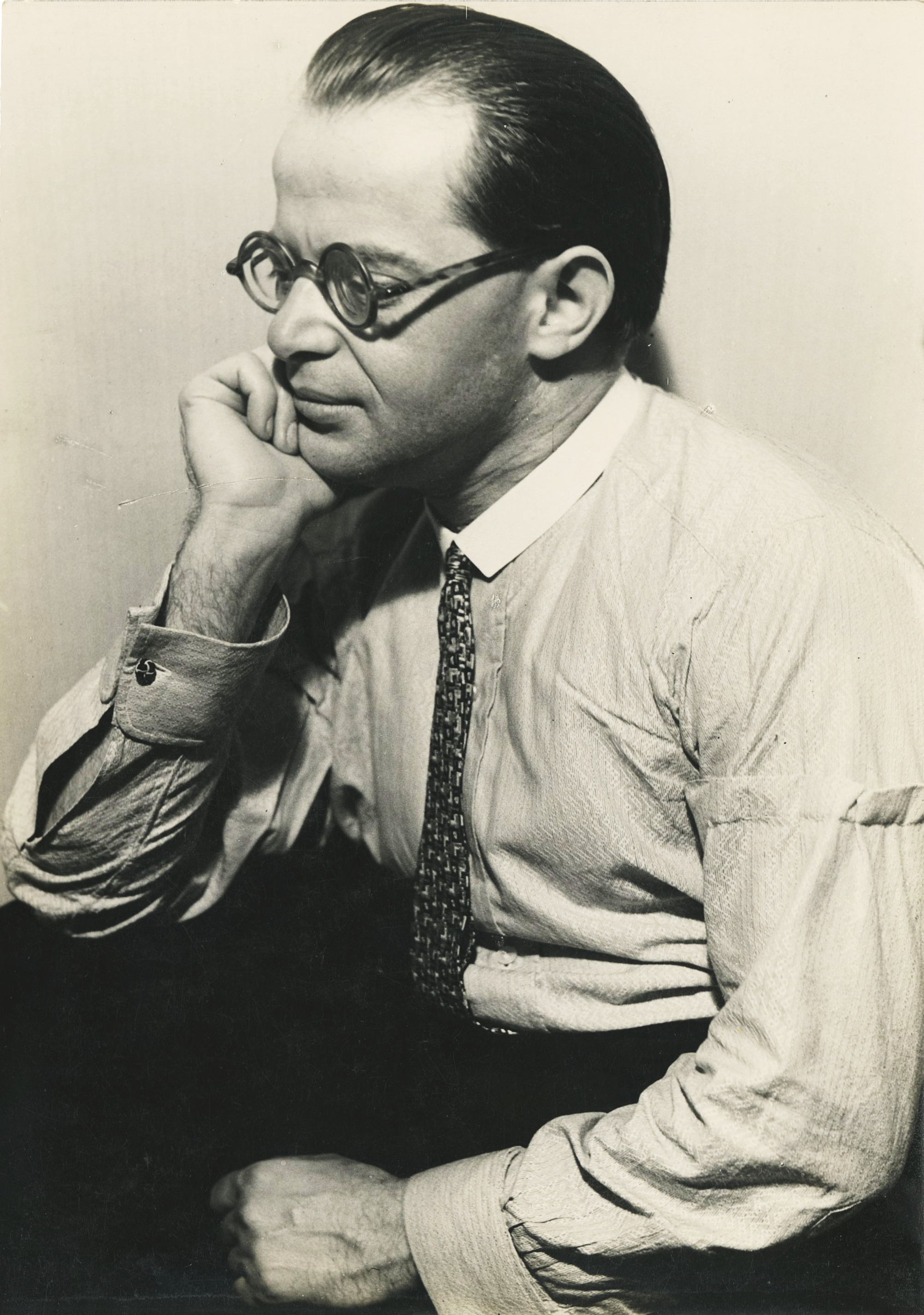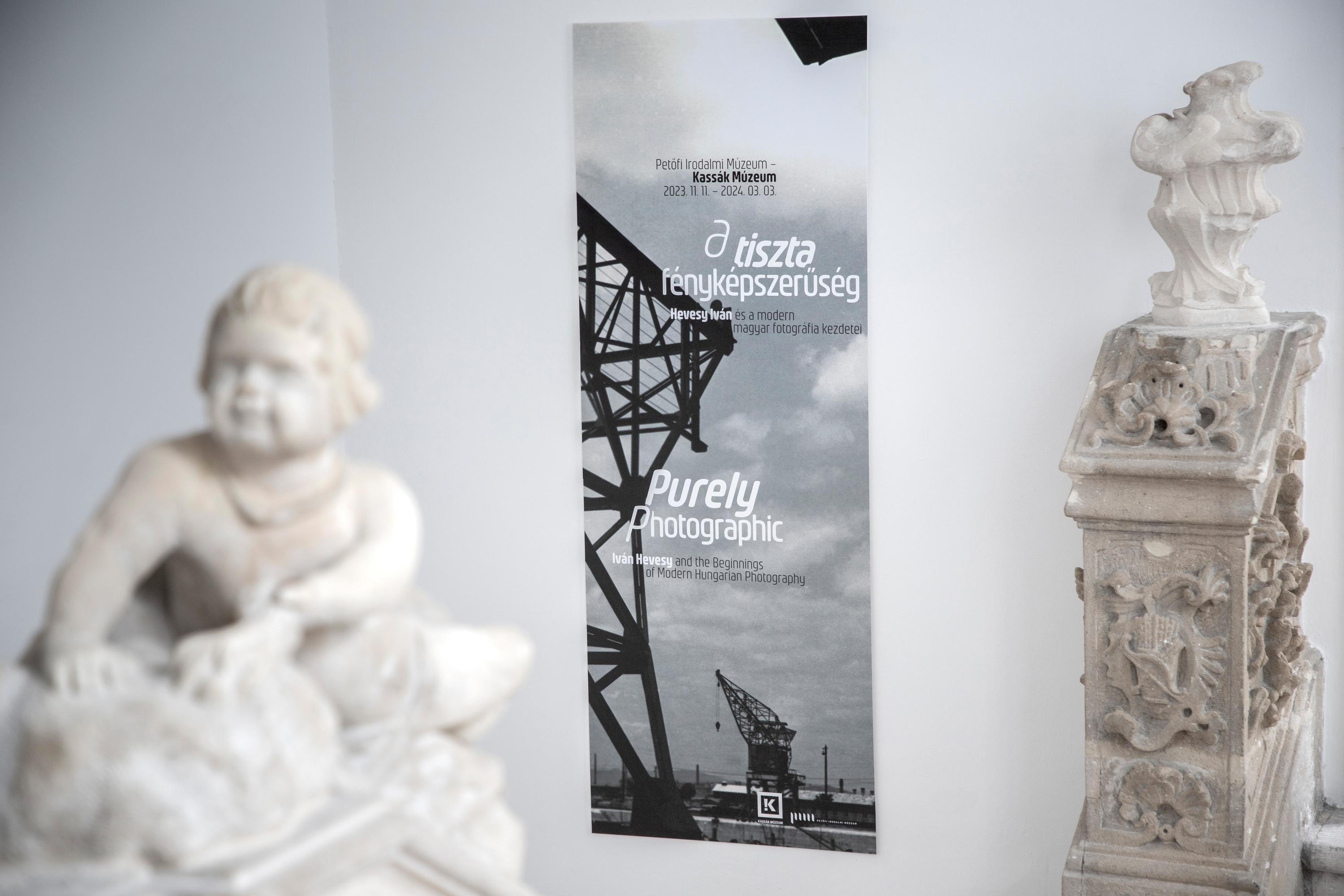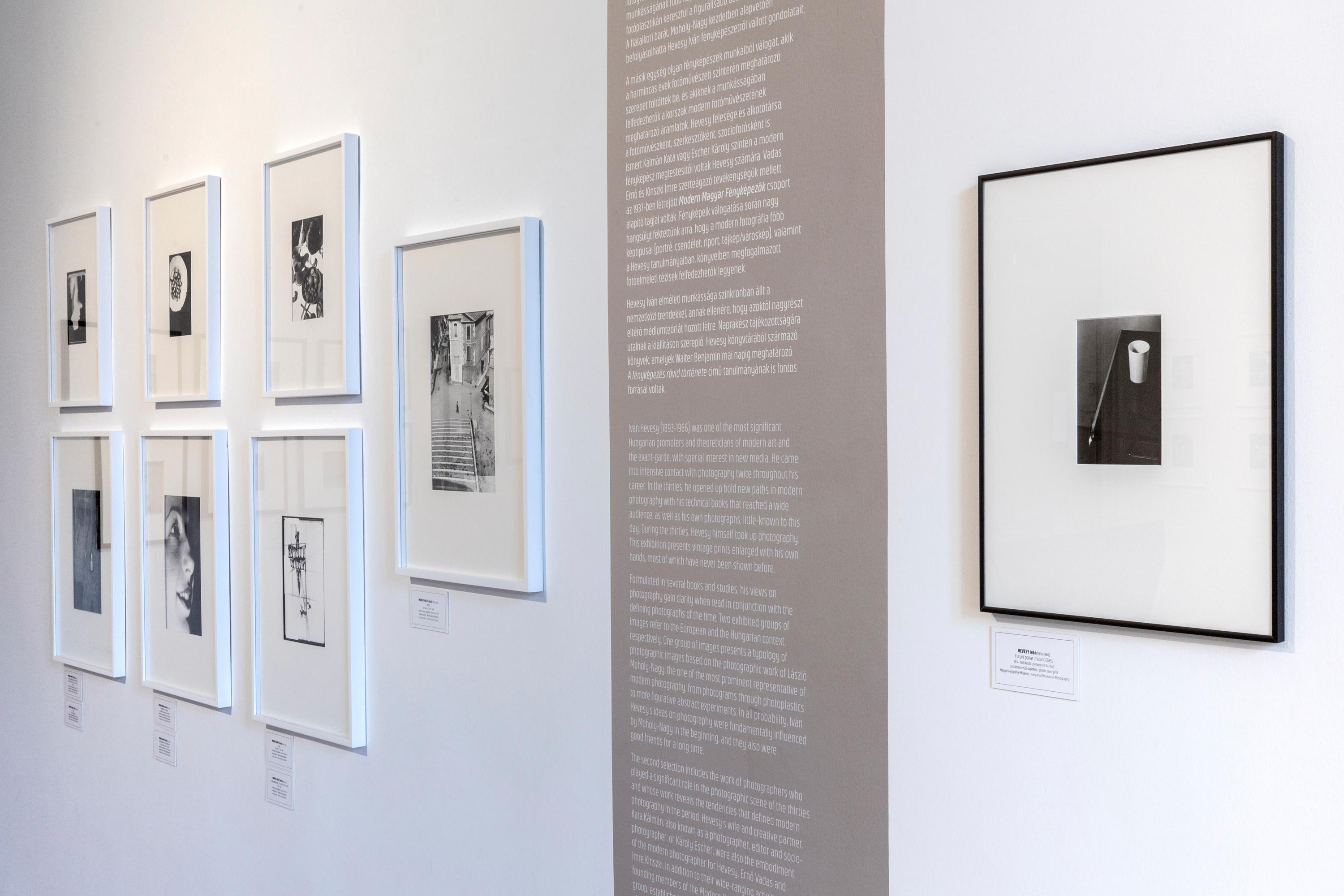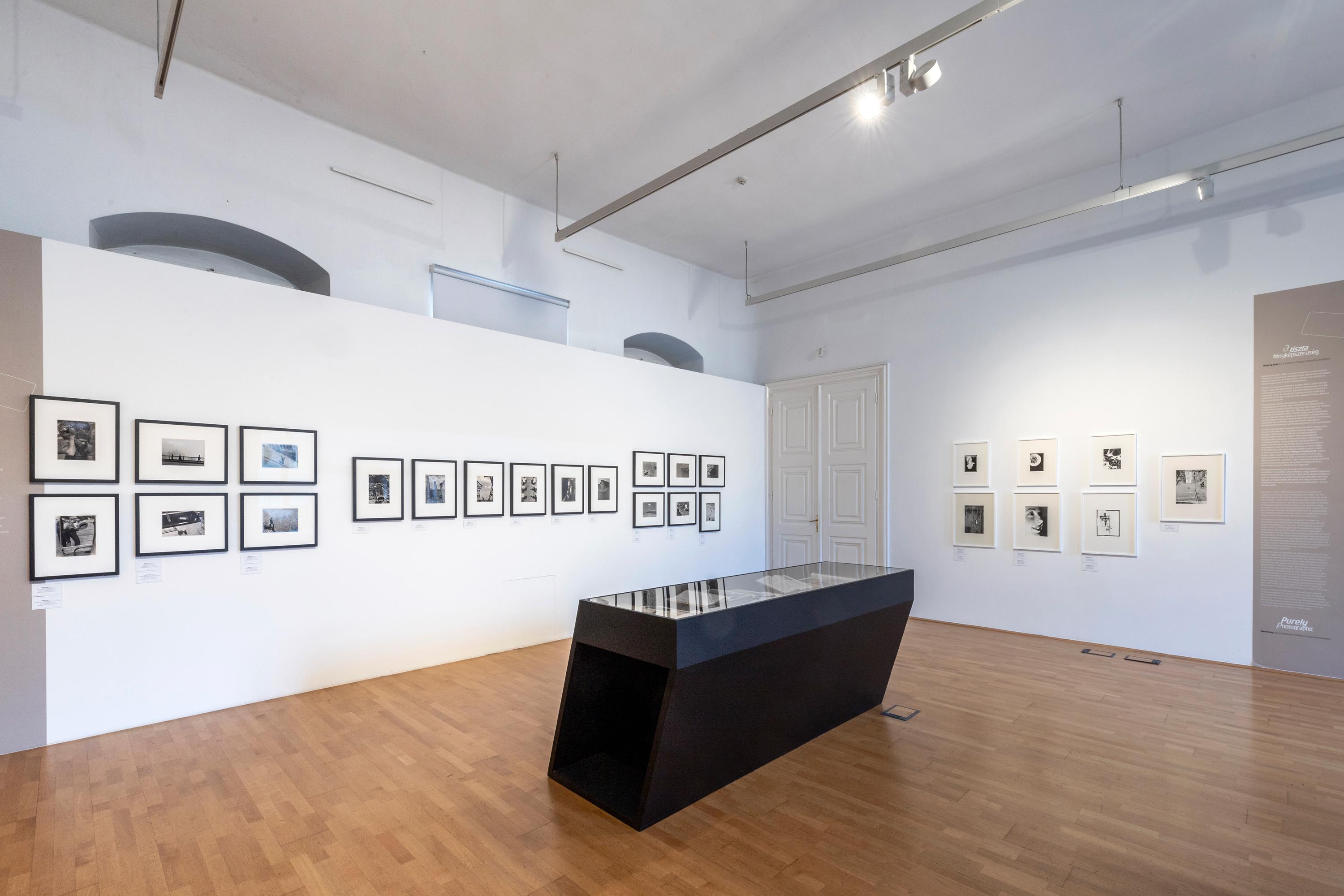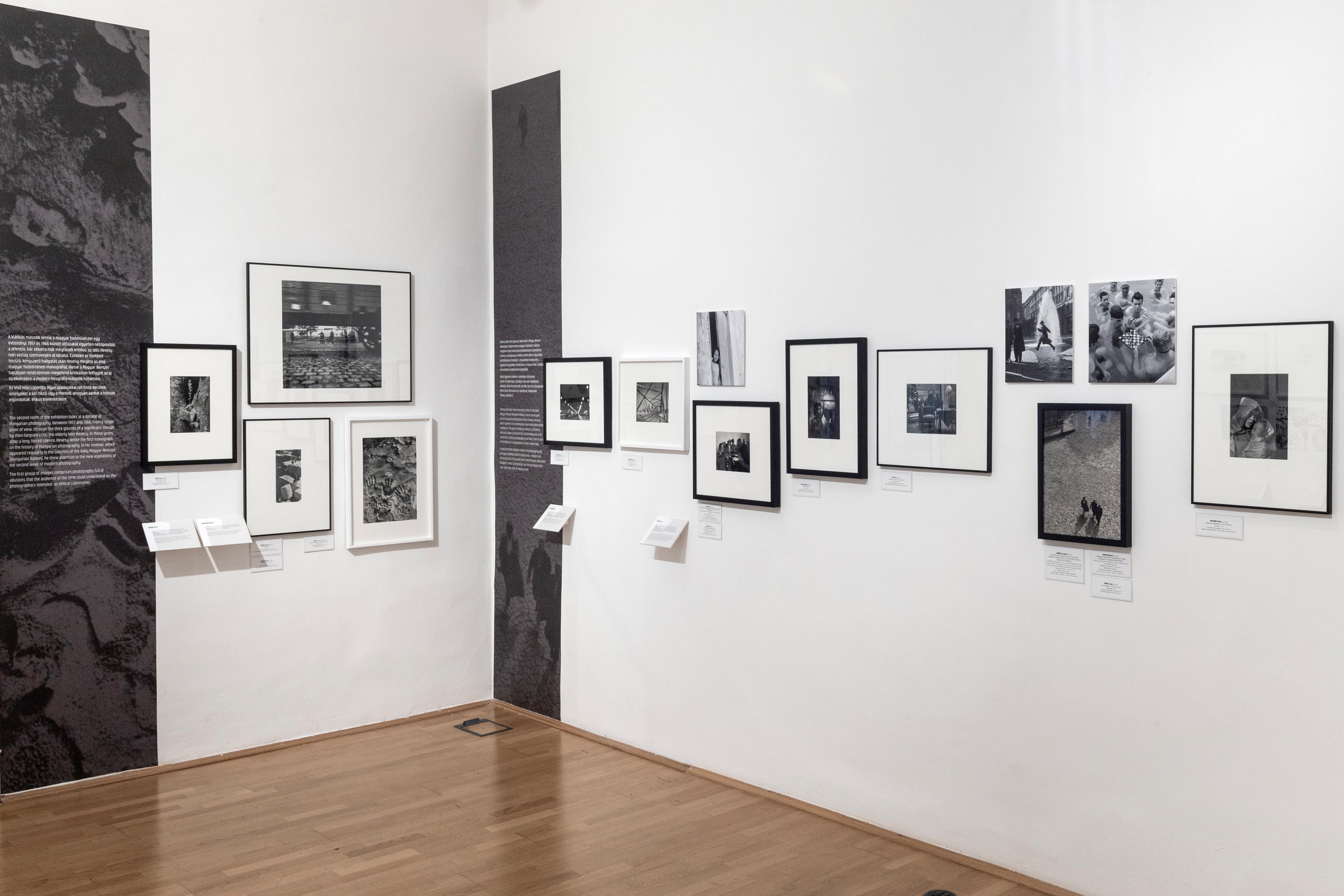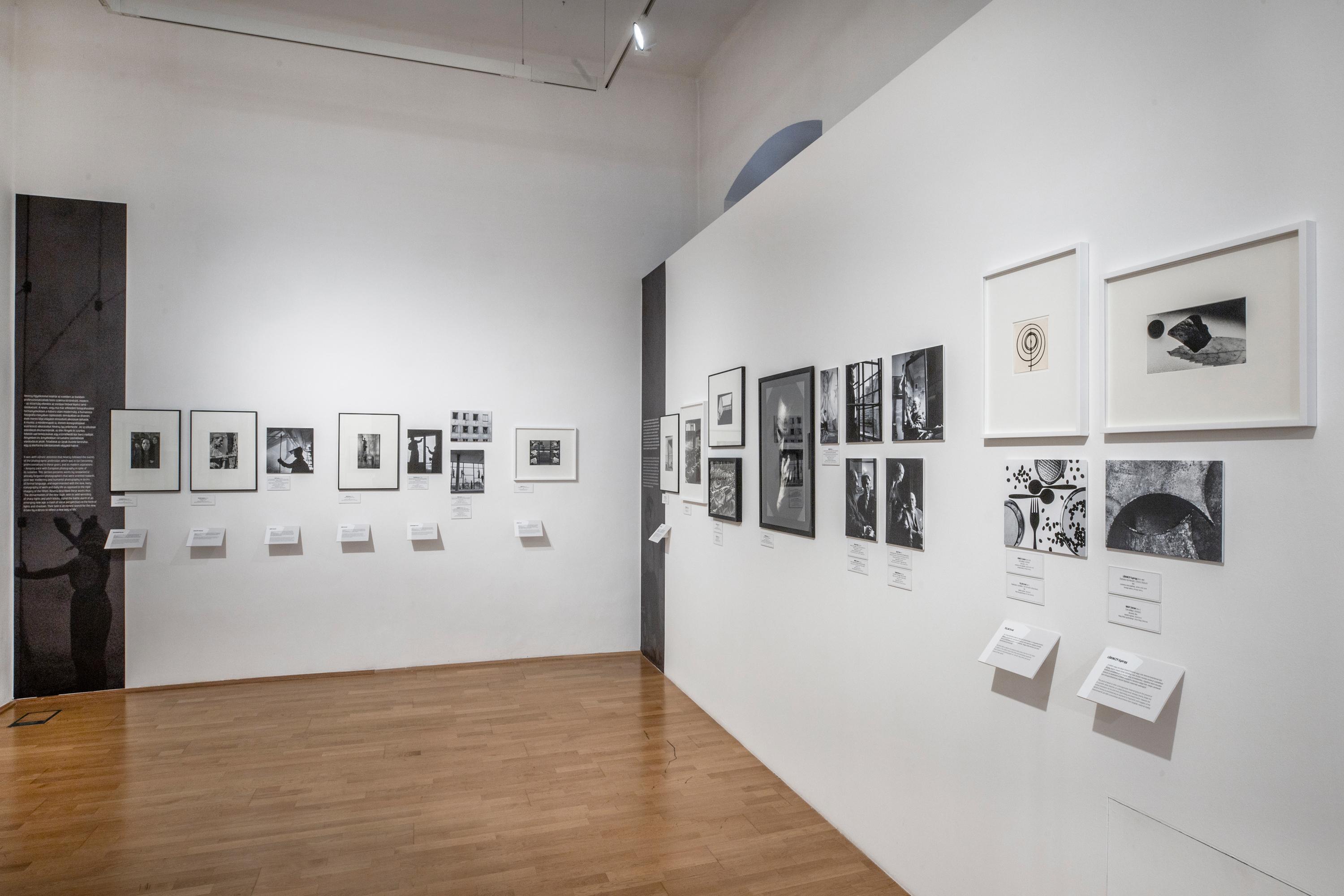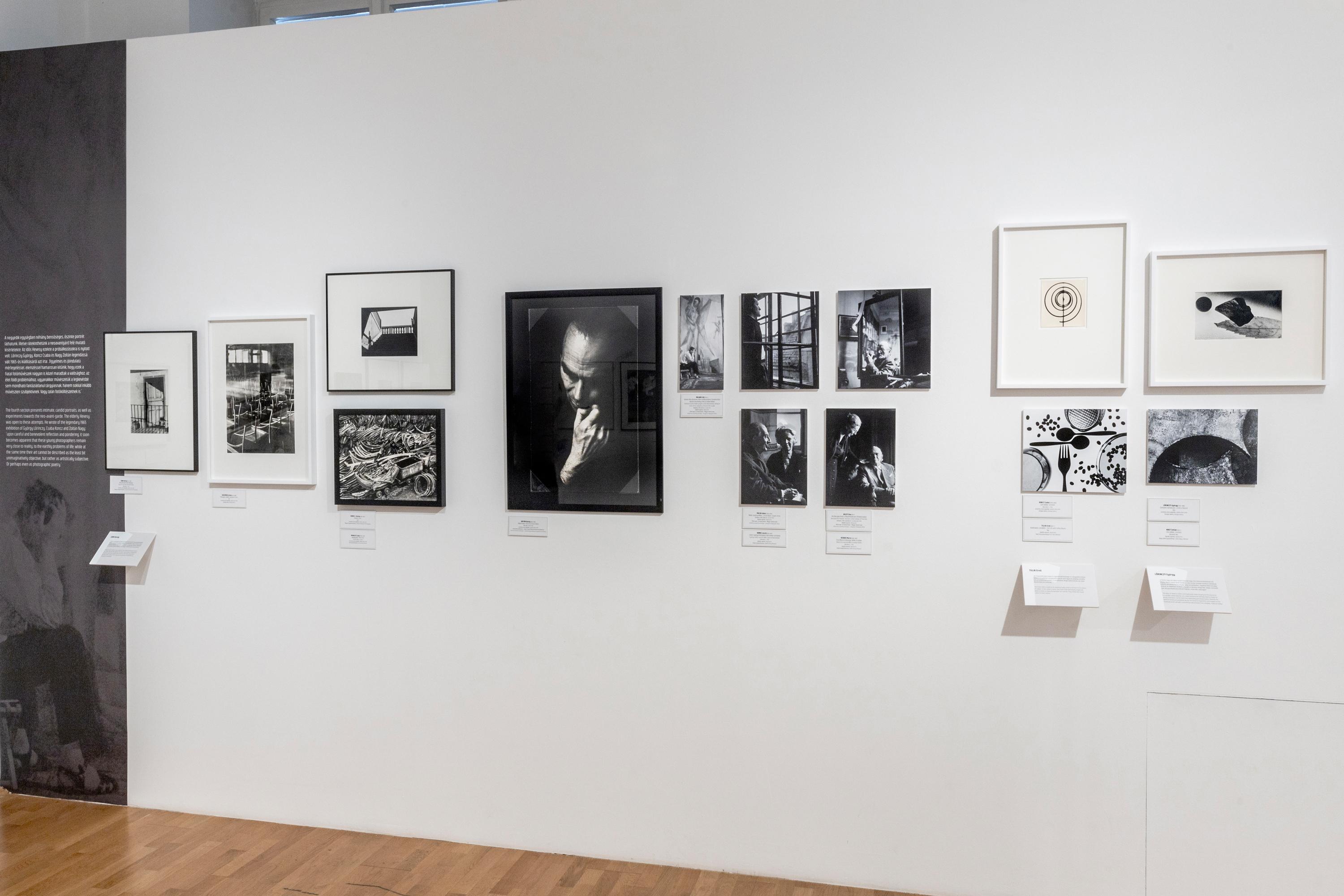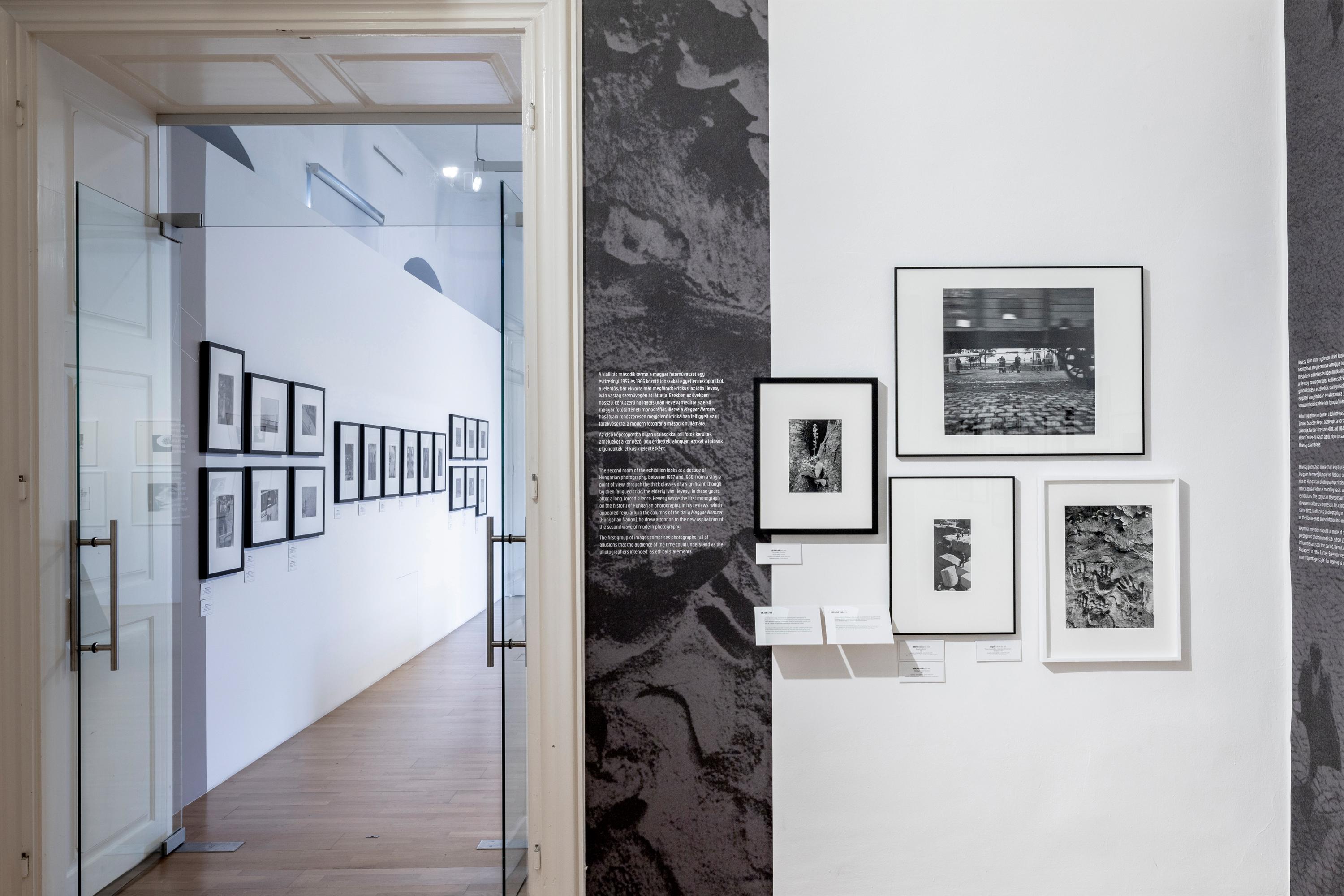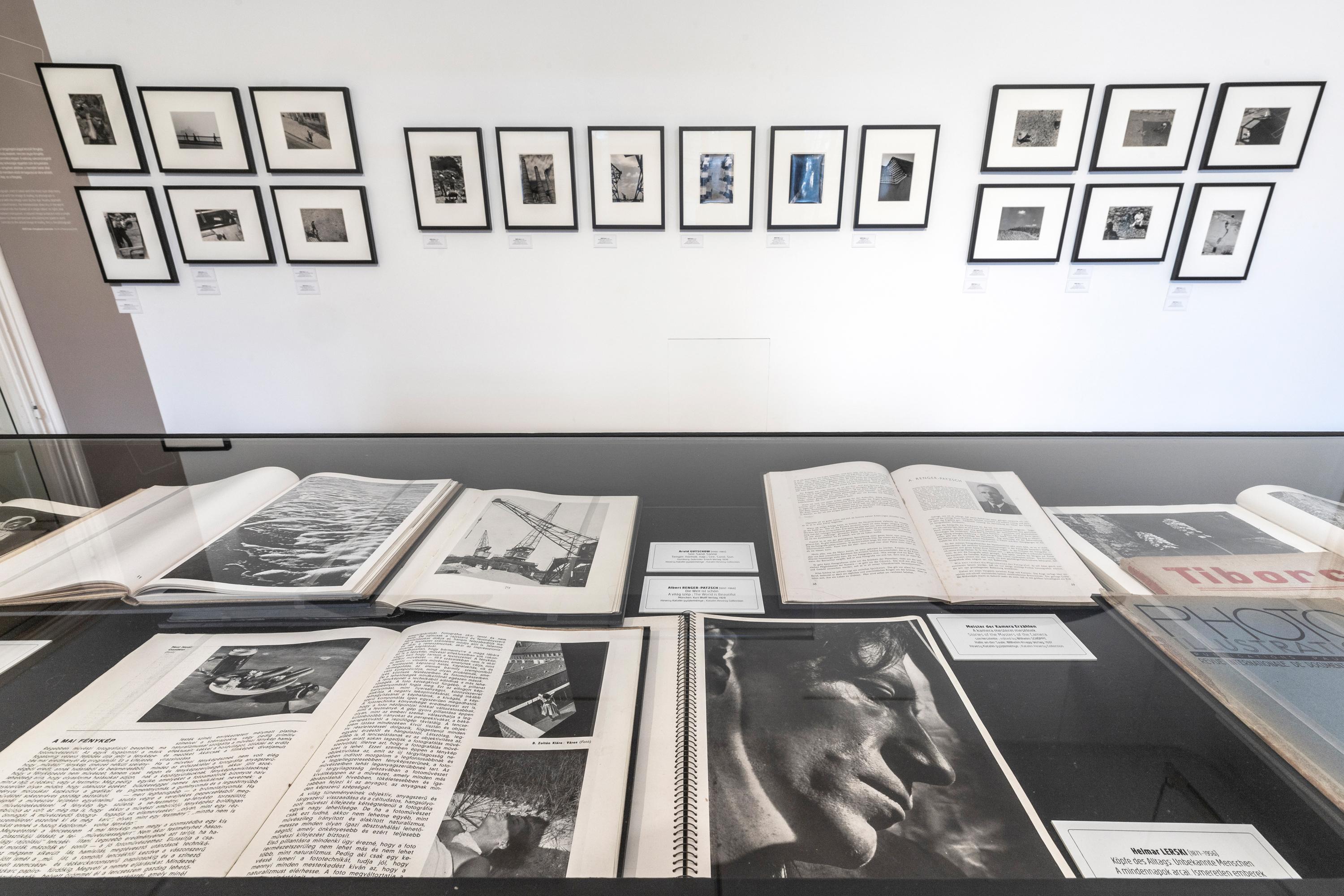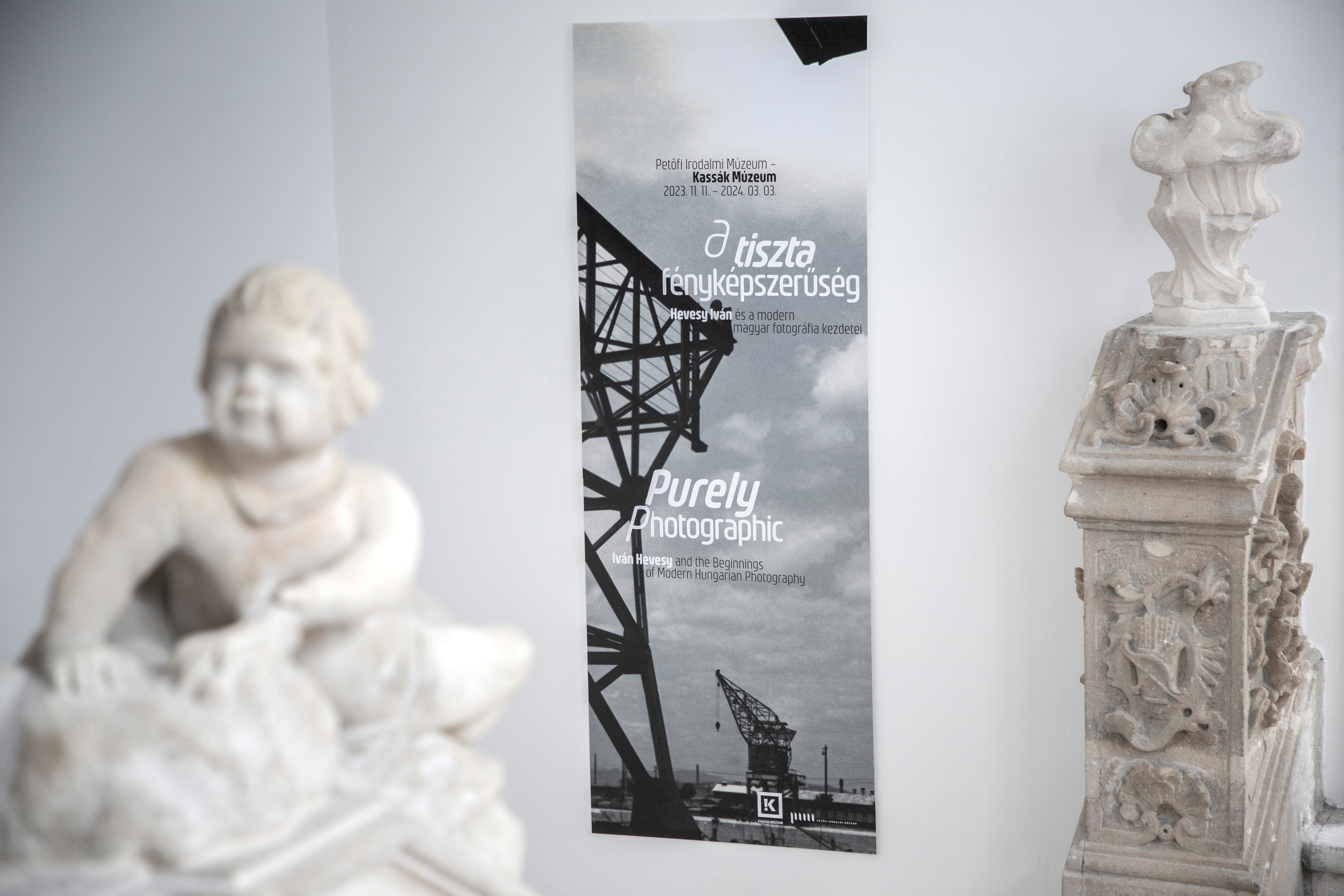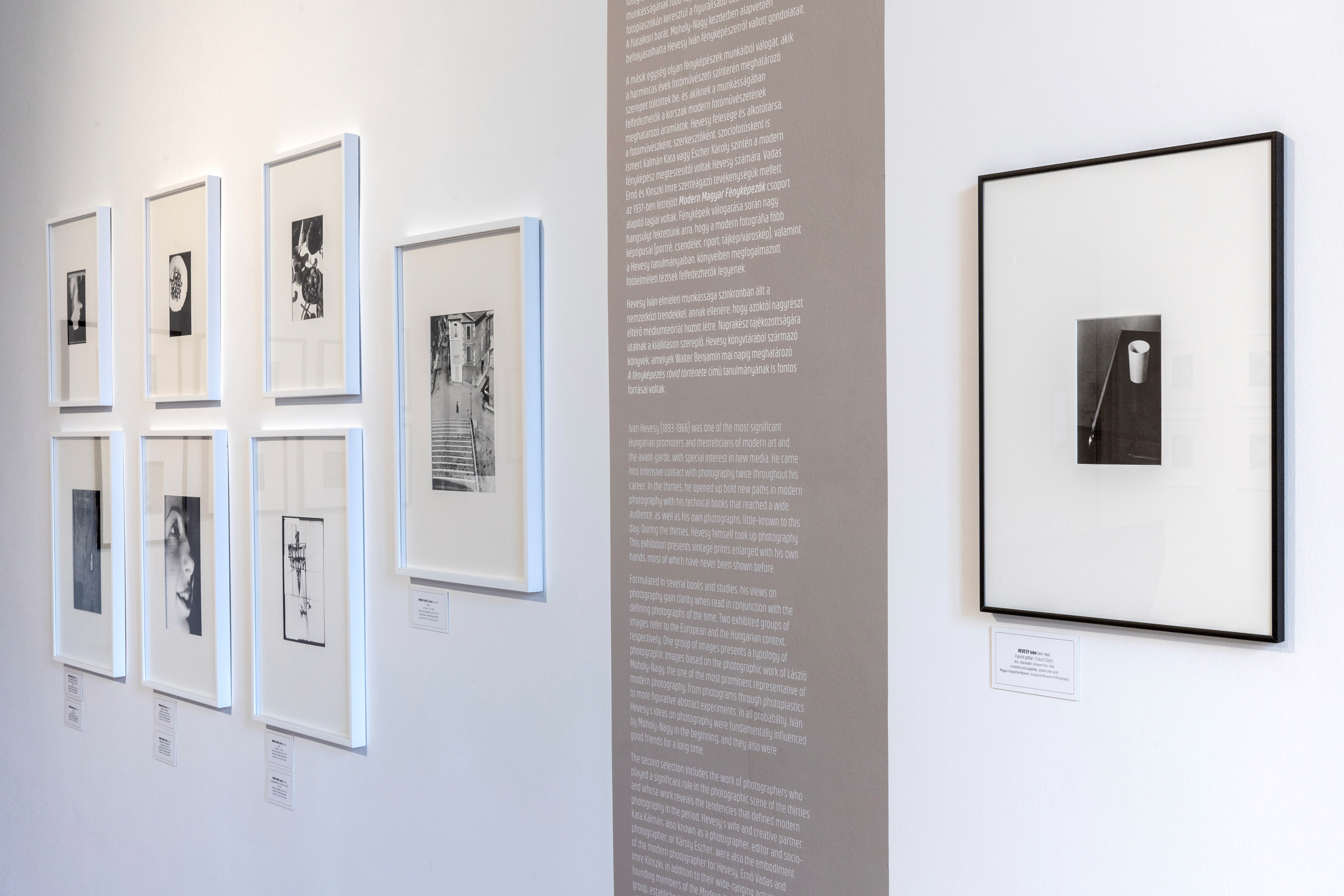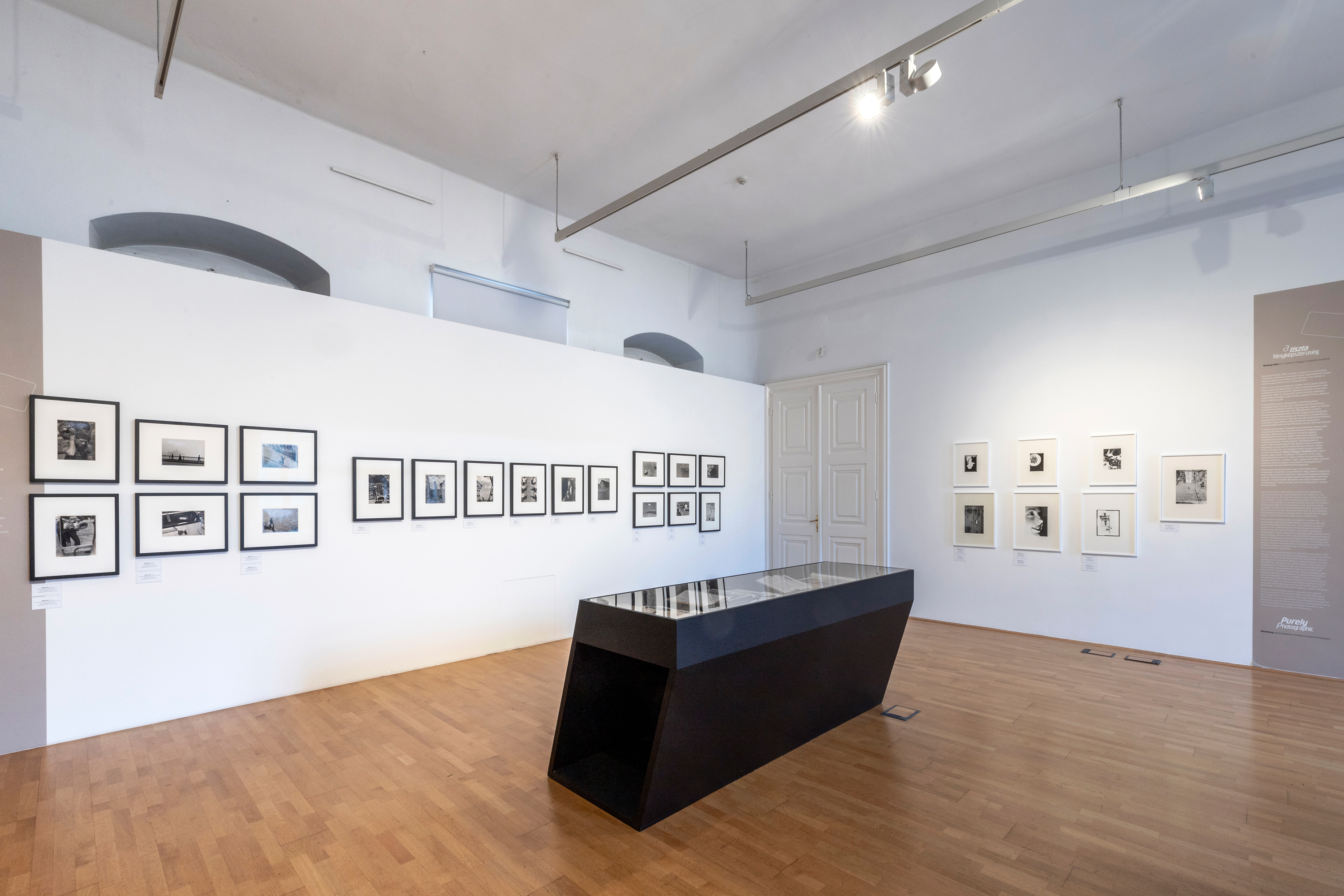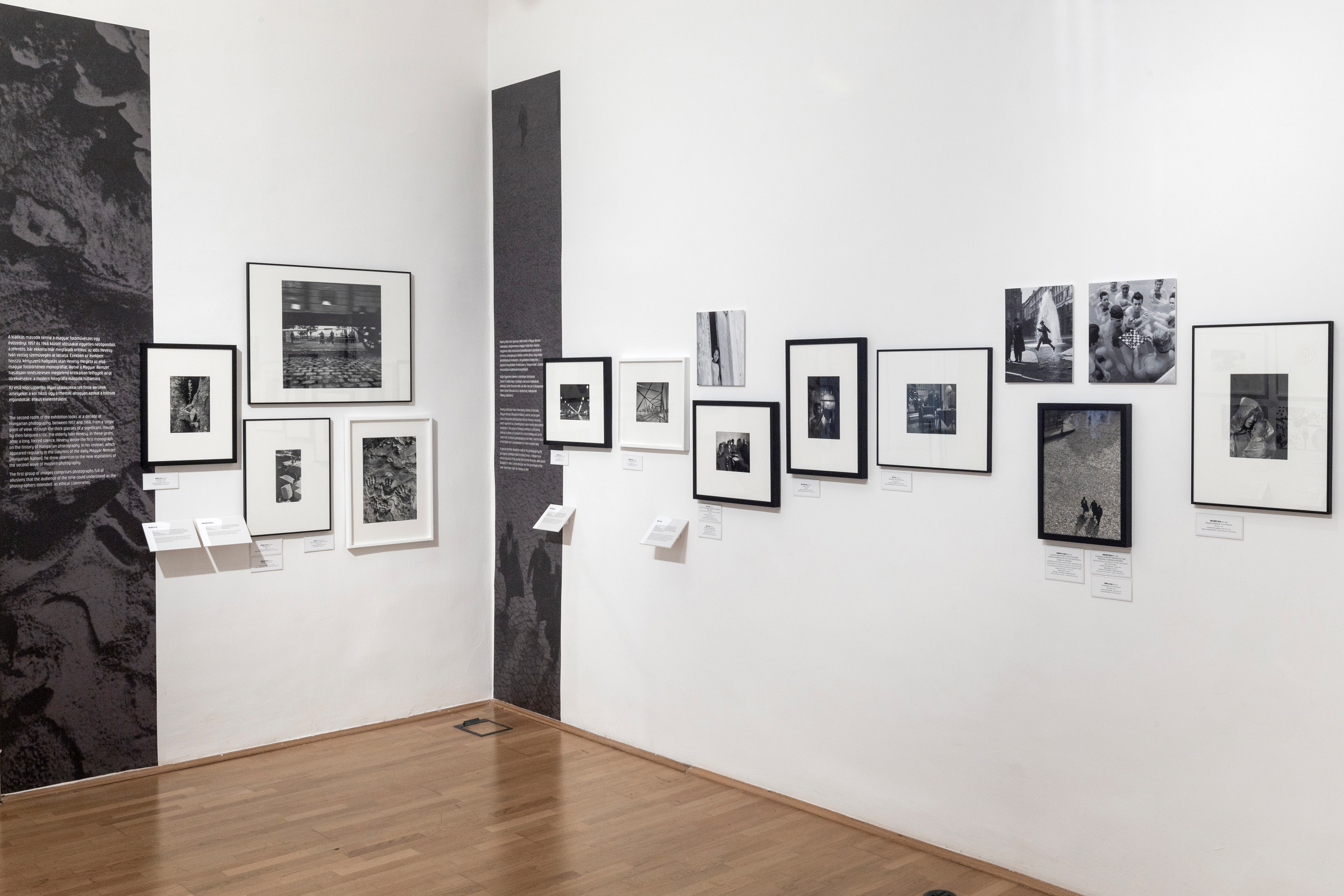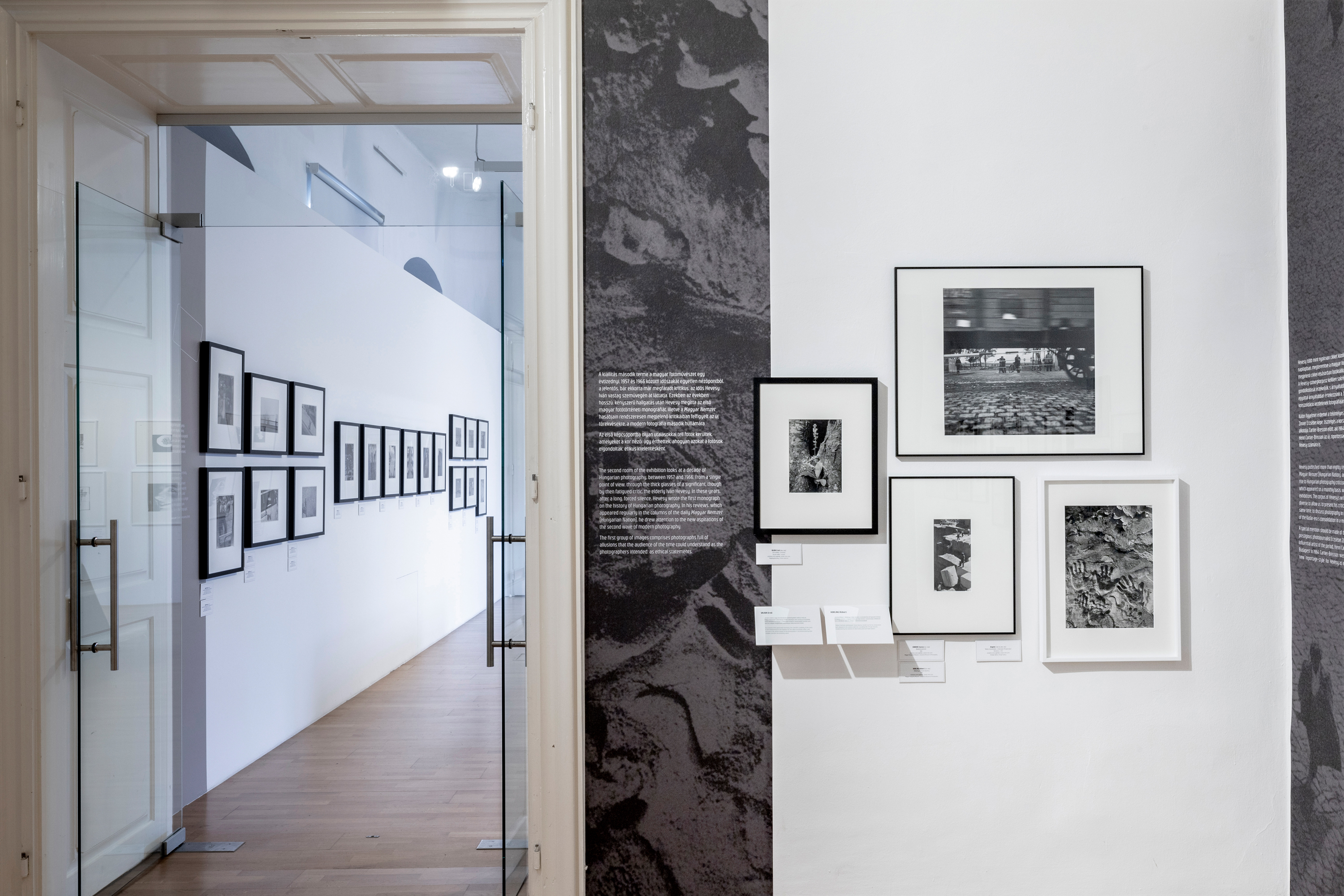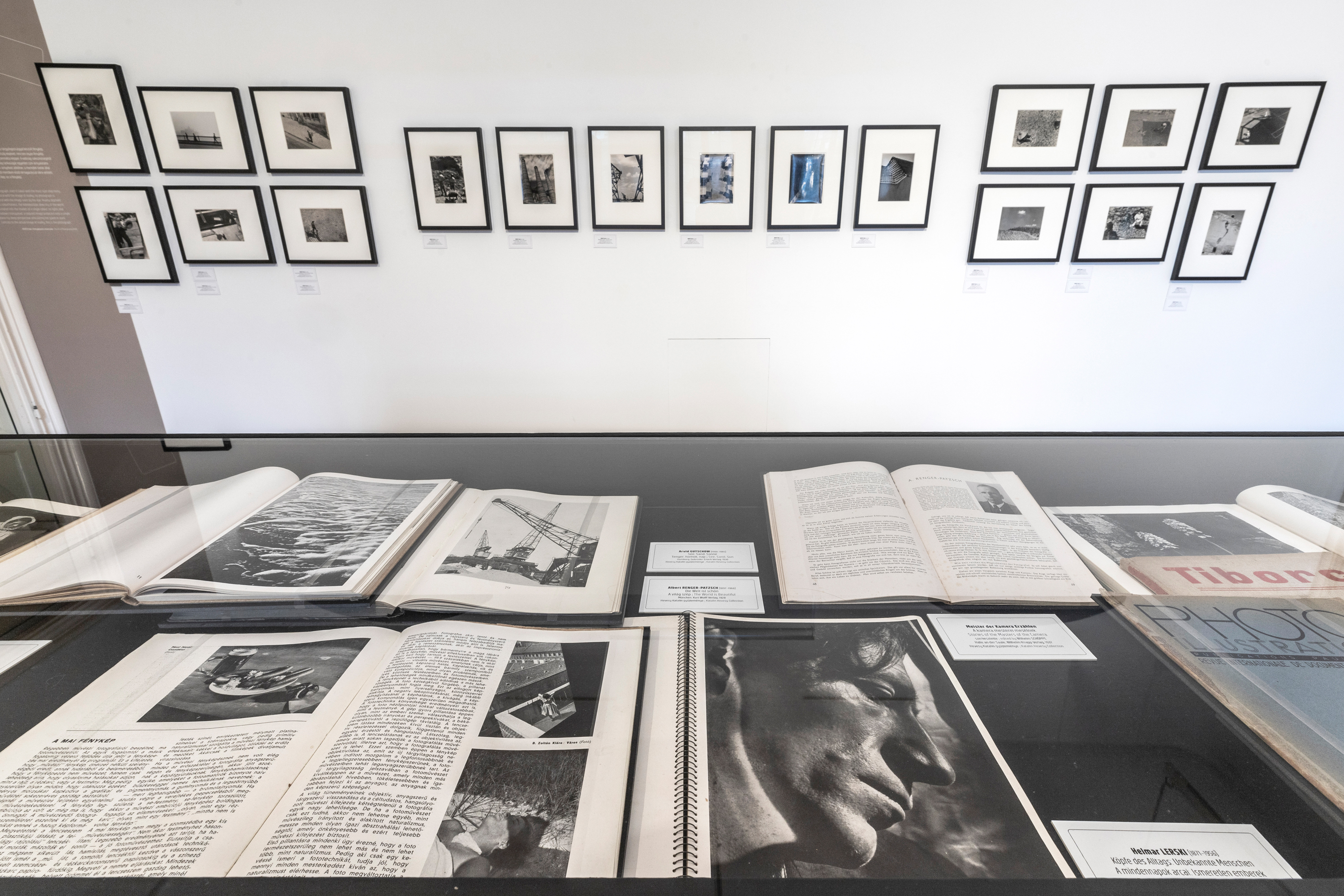PURELY PHOTOGRAPHIC: IVÁN HEVESY AND THE BEGINNINGS OF MODERN HUNGARIAN PHOTOGRAPHY
Opening: 10 November 2023, 6 PM
Opening speech: András Iván Bojár, art historian
IVÁN HEVESY (1893-1966) was one of the most significant Hungarian promoters and theoreticians of modern art and the avant-garde, with special interest in new media. He came into intensive contact with photography twice throughout his career. In the thirties, he opened up bold new paths in modern photography with his technical books that reached a wide audience, as well as his own photographs, little-known to this day. In the sixties, he wrote the first monograph on the history of Hungarian photography, and in his regularly published reviews he drew attention to new endeavours and the second wave of modern photography.
The exhibition at the Kassák Museum explores the complex relationship between Hevesy and modern photography, divided into two sections. In the first room of the exhibition, Iván Hevesy’s views on photography are illustrated by vintage prints enlarged with his own hands, most of which have never been exhibited before, as well as two thematic selections. Formulated in several books and studies, his views on photography gain clarity when read in conjunction with the defining photographs of the time. Two exhibited groups of images refer to the European and the Hungarian context, respectively. One group of images presents a typology of photographic images based on the photographic work of László Moholy-Nagy, one of the most prominent representatives of modern photography, from photograms through photoplastics to more figurative abstract experiments. In all probability, Iván Hevesy’s ideas on photography were fundamentally influenced by Moholy-Nagy in the beginning, and they also were good friends for a long time.
The second selection includes the work of photographers who played a key role in the photographic art scene of the thirties and whose work reveals the tendencies that defined modern photography in the period. Hevesy's wife and creative partner, Kata Kálmán, also known as a photographer, editor and socio-photographer, or Károly Escher, were also the embodiment of the modern photographer for Hevesy. Ernő Vadas and Imre Kinszki, in addition to their wide-ranging activities, were founding members of the Modern Hungarian Photographers group, established in 1937. In making a selection of their photos, great emphasis was placed on showcasing the main image types of modern photography (portrait, still life, reportage, landscape/cityscape), as well as the theses of photographic theory expressed in Hevesy’s studies and books.
Iván Hevesy’s theoretical work was in sync with international trends, despite the fact that he created a media theory that was largely different from those. From Iván Hevesy’s library, we present important publications that influenced his views on photography and served as sources for his photographic theory (Albert Renger-Patzsch, Helmar Lerski, Arvid Gutschow etc.). These same works were also analysed in Walter Benjamin’s still influential study A Brief History of Photography.
The second section of the exhibition looks at a decade of Hungarian photography from a single point of view, through the thick glasses of the significant, though by then fatigued critic, the elderly Iván Hevesy. Hevesy was navigating in the new post-1945 world insecurely, as a stranger. We cannot know whether he had already experienced that the principles and radical artistic ideas he professed and promoted, including art as a social action, had no significance, or whether it was only in these years that he became aware of it. His writings, which were profoundly leftist in their commitment, were not enough “in line” and therefore harshly rejected. He lost his job in 1950, and was mercilessly forced into retirement. He started publishing again in 1957, now exclusively on photography. He published more than eighty reviews of contemporary photography in the daily Magyar Nemzet (Hungarian Nation) between 1958 and 1966. It was with utmost attention that he followed the events of the photographic profession, which was in fact becoming professionalised in these years, its modern aspirations – keeping pace with European photography in spite of its isolation. Meanwhile, he gave rise to Hungarian photography criticism with his writings. His monthly articles were mainly about photo exhibitions in the columns of the daily Magyar Nemzet.The corpus of Hevesy’s writings is sufficiently diverse to present his critical thinking, and at the same time to provide a more nuanced discussion of the photography of the “sixties”, the beginning of the Kádár regime’s consolidation. The exhibition presents works by renowned or already forgotten photographers that were oriented towards post-war modernity and humanist photography in terms of formal language, and experimented with the new, lively iconography of work and daily life as opposed to the rigid imagery of the fifties. The elderly Hevesy was also open to experiments towards the neo-avant-garde, starting during the early sixties.
Credits
Curators: András Bán – Balázs Zoltán Tóth
Design: Endre Koronczi
English translation: Dániel Sipos
Exhibition organization: Merse Pál Szeredi
Installation: Ferenc Badak, Annamária H. Kocsis, Gyula Kemény, György Mihalkov
Communication: Renáta Szikra
Administration: Erzsébet Károly
Insurance: UNIQA
Lending institutions and collections:
• Collection, Budapest
• Herman Ottó Museum, Miskolc
• Katalin Hevesy Collection, Budapest
• Hungarian Museum of Photography, Kecskemét
• Hungarian National Museum, Budapest
• Mihály Medve Collection, Budapest
• Museum of Fine Arts Budapest – Central European Research Institute for Art History, Budapest
• Vintage Gallery, Budapest
• and private collections
Digital copies:
• Arcanum Digitális Tudománytár
• MTVA Press and Photo Archives – Hungarian Telegraphic Office, Budapest
• Zoltán Nagy Collection, Turin
• Petőfi Literary Museum, Budapest
• Ernő Tillai Collection, Pécs
Special thanks:
• Katalin Hevesy
• Mihály Medve
• Attila Pőcze – Vintage Gallery
• Mihály Surányi – Fotóművészet magazine
Press Photos:
Exhibition interior
Guide

